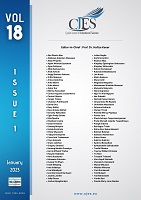The biomechanics form and ıts application to assess student’s physical skills
The biomechanics form and ıts application to assess student’s physical skills
Author(s): Agam Akhmad Syaukani, Vera Sept Sistiasih, Pungki Indarto, Nur SubektiSubject(s): School education, Evaluation research, Health and medicine and law, Family and social welfare, Sports Studies, Sociology of Education
Published by: Birlesik Dunya Yenilik Arastirma ve Yayincilik Merkezi
Keywords: biomechanics assessment; observation checklist; physical education; physical skills;
Summary/Abstract: One of the intended learning outcomes of Physical Education (PE) is for students to develop physical skills. Biomechanics can be used as a discipline to measure the level of physical skill. This study aimed to develop an assessment form to measure the level of physical skill. The movement principle of biomechanics was incorporated into an observation checklist form. The form is meant to help Physical Education Teachers (PET) qualitatively analyze students' physical skills using biomechanics. This study aligns with research and development model which conducted in three phases: need-analysis, development, and model efficiency test. The form was built with two main components: physical skill and biomechanical principles. Physical skill is related to standard movement patterns for a given sporting skill. The biomechanical principle lays the foundation for all movements. This research uses a qualitative approach. A total of 120 PET from 120 secondary schools were involved as subjects in this study. Interviews, observation, and questionnaire were used to collect the data. This research yielded the following result, first, there are problems with integrating biomechanics into an assessment of physical skill. Second, a biomechanics form is developed in the checklist-style observation form to help PET evaluate their students’ learning outcomes. Third, biomechanics form was practical to be used as a learning assessment tool because it met the criteria of validity, practicality, and effectiveness.
Journal: Kıbrıslı Eğitim Bilimleri Dergisi
- Issue Year: 18/2023
- Issue No: 1
- Page Range: 71-88
- Page Count: 18
- Language: English

